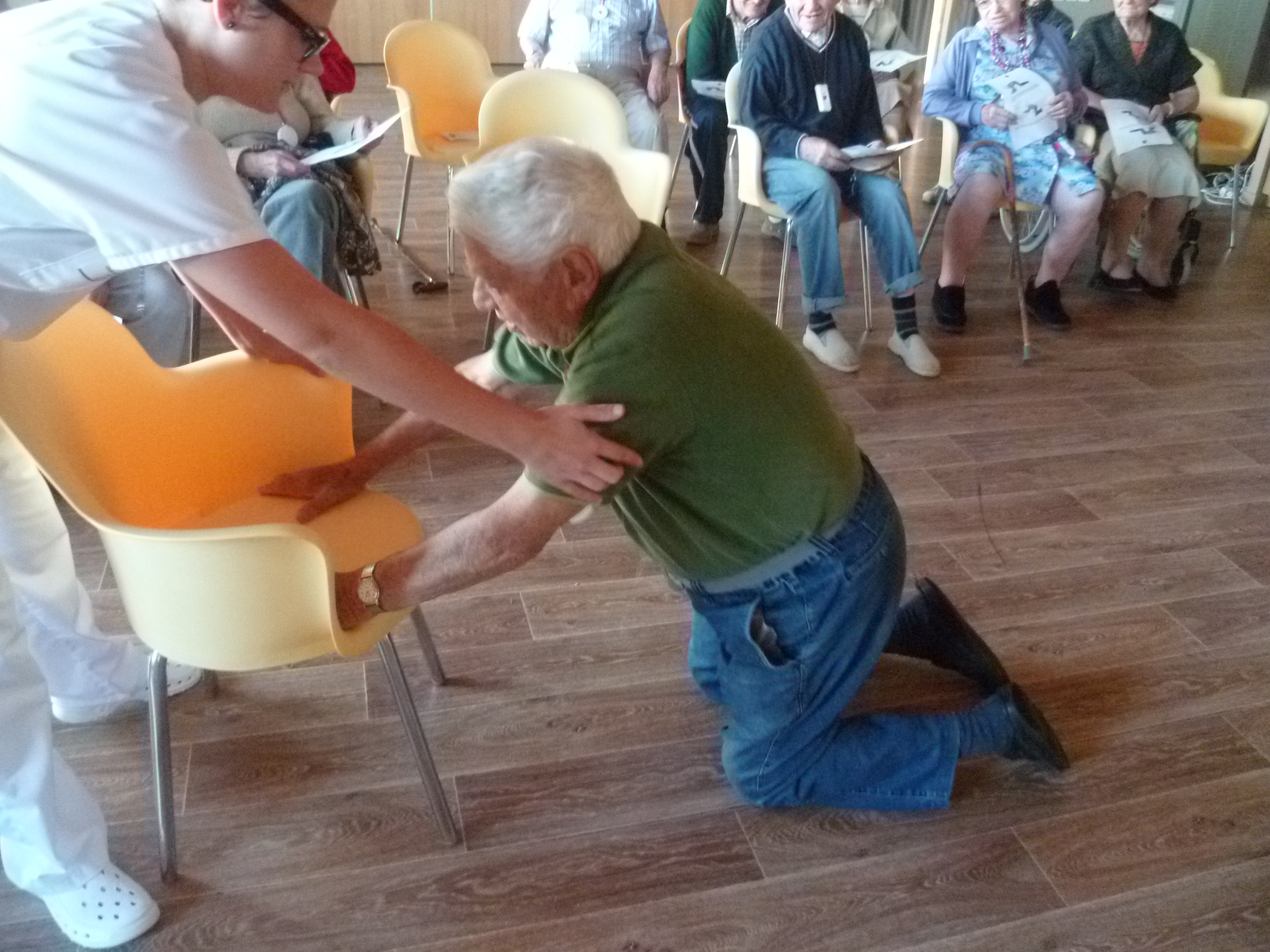 The fall of the elderly is a very common problem. One-third of subjects over the age of 65 fall at least once a year, compared to more than half over 85 years of age. Fall symptom, fall by clumsiness, whatever its etiology, it is never commonplace and is an open door to dependence and institutionalization. The various problems that arise then are to make the assessment lesion, to define the etiology, to estimate the risk of recidivism taking into account the medico-social situation in the eventual decision of a hospitalization.
The fall of the elderly is a very common problem. One-third of subjects over the age of 65 fall at least once a year, compared to more than half over 85 years of age. Fall symptom, fall by clumsiness, whatever its etiology, it is never commonplace and is an open door to dependence and institutionalization. The various problems that arise then are to make the assessment lesion, to define the etiology, to estimate the risk of recidivism taking into account the medico-social situation in the eventual decision of a hospitalization.
CLINIC:
Examination:
The initial interrogation of the patient or his entourage will have to define:
– the exact circumstances of the fall:
• clumsiness, obstacles,
• discomfort, syncope, loss of consciousness requiring hospitalization,
• derobement of the lower limbs;
– its context:
• number and dates of any previous falls,
• autonomy before walking,
• mechanical walking aids (walkers, canes, etc.),
• recent fever or deterioration of the general condition,
• progressive dementia …
– the immediate repercussions: pain, functional impotence, the patient was able to get up alone?
How long did he stay on the floor?
Physical examination:
INITIAL LESSONAL BILAN:
He will have to :
– eliminate any fracture or dislocation requiring emergency hospitalization by rheumatologic examination. Especially femoral neck fractures (especially
the only symptom can be painful support!);
– check for the absence of clinical signs of rhabdomyolysis (local erythema, onset of necrosis) if the patient was unable to stand up alone and remained on the ground for a long time;
– attempt the safe reverticalisation and check the immediate autonomy when walking.
ETIOLOGICAL DIAGNOSIS:
It is primarily clinical but is never simple, different factors are mostly entangled.
Intrinsic factors
They are multiple and detailed in etiologies, their research involves a complete clinical examination.
The search for orthostatic hypotension must be systematic. It will also be necessary to track iatrogenesis, which is responsible for at least 10% of the falls of the elderly subject.
iatrogenic
– Psychotropic ⇒ night falls;
– Antihypertensives, IEC, venous and arterial vasodilators ⇒ orthostatic hypotension.
Extrinsic factors
The presence of carpets, pets, slippery or wet floors, the absence of toilet booster or stair railing, a bed that is too low or too high, should be searched systematically to limit risk of recurrence.
ADDITIONAL EXAMENS:
The electrocardiogram should be systematic and will be followed by ECG holter if one suspects bardycardia or paroxysmal arrhythmia. The biological assessment, guided by the clinical diagnostic procedure, will more particularly include blood count, CRP assay, blood ionogram, CPK, serum calcium, blood glucose, renal function and TSH assay.
TECHNOLOGY:
Neurological etiologies:
– Parkinson’s;
– Stroke;
– Dementia (progressive apraxia of walking) +++;
– Confusional syndrome;
– Vertebrobasilar insufficiency;
– Seizure ;
– Polyneuropathies;
– narrow lumbar canal …
Rheumatological etiologies:
– Coxarthrosis, gonarthrosis;
– disorders of spinal statics;
– Static disorders of the foot;
– Absence of adapted shoes;
– Onychogriffose …
Muscular etiologies:
– PPR;
– Cortisonic myopathy;
– Dysthyroidism …
Urinary incontinence :
Metabolic etiologies:
Hyperglycemia, hypoglycemia;
Hypercalcemia, hyponatremia.
Cardiovascular etiologies:
– disorders of rhythm and conduction;
– Aortic stenosis;
Orthostatic hypotension ++++;
– Myocardial infarction.
Other etiologies:
– severe malnutrition;
– Acute infections:
• pneumopathies;
• High urinary infections ….
– Misfeeds:
• Boosting heart failure;
• Respiratory insufficiency;
• Anemia …
– Visual disturbances:
• macular degeneration;
• Cataract …
– Dizziness;
– Iatrogenics +++
HOW IS HOSPITALIZE ?
Hospitalization is essential:
In case of suspected fracture or dislocation, in case of loss of consciousness, syncope, or when at the end of the clinical examination an acute pathology not curable at home has been suspected.
It will also be indicated when the loss of immediate autonomy caused by the fall exceeds the capacity to maintain at home and when the risk of recidivism is greater.
Estimate the risk of re-offending:
A number of anamnestic and clinical factors make it possible to quickly estimate the risk of recurrence and thus to judge the appropriateness of a hospitalization:
– anterior fall within 3 months;
– time spent on the ground more than 3 hours;
– impossibility of maintaining unipodal support;
– impossibility to perform a half-turn;
– impossibility of getting up from a chair;
– impossibility to converse while walking;
– presence of a post-fall syndrome.
The Get Up and Go Test makes it possible to rapidly estimate the risk of recurrence of falls of an elderly subject, which is major when the test execution time exceeds 20 seconds or when the elderly subject presents a major instability in the walk, can not turn around or drop on the chair.
The existence of a post-fall syndrome is a geriatric emergency and an indication for hospitalization, because only early physiotherapy can avoid loss of autonomy and gratification. He associates a major anxiety of walking with a refusal of reverticalization. The patient is in retropulsion while sitting, the standing position is non-functional, in retropulsion. The walk is hesitant, slowly, with heel support and enlargement of the support polygon, the patient trying to hold on to all the furniture.

Leave a Reply